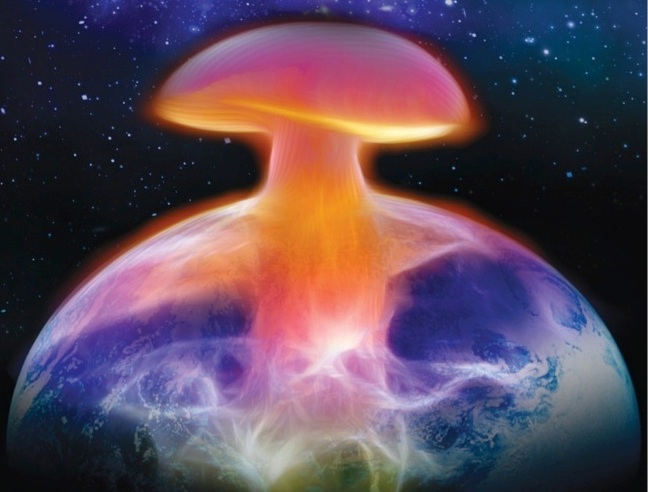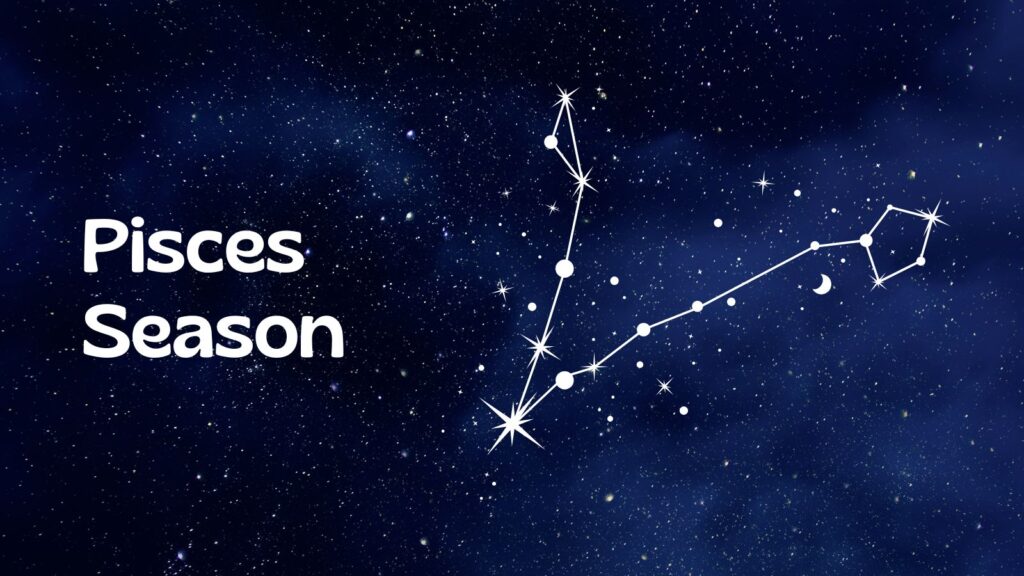The following is excerpted from Magic Mushroom Explorer published by Inner Traditions International.
Seeking supernormal inspiration, I determined to visit the Royal Botanical Gardens at Kew in Richmond, south of the Thames, and do some perceptual fieldwork there. This glorious plant sanctuary provides a wonderful opportunity to confront some of nature’s more exotic creations housed safely within Kew’s splendid Victorian greenhouses.
Once I had arrived, I discreetly downed several mouthfuls of recently gathered mushrooms and awaited the dimensional translation of my perception. I was, it must be said, a little apprehensive, especially because I was in a public place.
The effects began to emerge while I was walking around Kew’s vast and resplendent grounds. As ever, my senses were suddenly open to a surge of external reality as if I had woken up from the sleep of normal consciousness.
I came across a yew tree, upon which a sign declared it to have been worshipped as sacred in pre-Christian times. I carefully plucked one of its numerous reddish berries and began to almost stagger in awe at the dark seed sitting curiously loosely inside. I marveled at the natural design, for the seed looked as though it were the softly embedded occupant of a refined space vessel cunningly designed to deliver it to fertile ground, where its genetic legacy could be expressively released.
As I continued to stroll through the gardens, I came across some pine trees, whose sweet aroma welcomed my alert senses. Then I confronted an altogether different kind of tree, whose lofty green-leafed branches appeared mythically distinct. I furiously began to scribble the following notes, no small feat as it is well-nigh impossible to write during the full ontological throes of the psychedelic experience. Indeed, I had not done so for quite some time. At any rate, I managed the following:
A species of Fagaceae followed the pines, named Fagus sylvatica (the beech), with its smooth elephantine bark that is smothered with another display of naturally engineered genetic wizardry, namely lichen, testifying that this tree is freshly abrim with healthy biochemical processes.
As I sit once more under nature’s psilocybinetic spell, I am convinced that a new science is called for, a science that views life anew under the perceptual lens afforded by the mushroom. For it is only through psilocybin’s perception-enhancing magnification power that we are able to apprehend, in full, the sheer beauty of the biosphere, this luxuriant film of frenzied biological activity that surrounds the globe and from which we have been born. I therefore decree a new science—the science of psilocybinetics!
Such a science is to be dedicated solely to the observation of nature, in the field, with the aid of psilocybin, in order to write and record in the most literary means available those traces of her majesty that we are able to behold with the psilocybin-charged naked eye alone. Thus, we should endeavor to build upon the previous body of knowledge collated by naturalists so as to give such knowledge a poetic finishing touch.
A new empiricism then, improved upon by the object of study itself. Thus, nature experiences itself through its cortically endowed creatures—we Homo sapiens—in the refined manner granted through the sublime perceptual effect of the psilocybin mushroom. It is as if a scientist peering at a slice of nature through a microscope were to eat a portion of that slice and thence find his empirical view enhanced. Pursued, such an intimate relationship with nature will assuredly yield infinite fascination and inspiration.
After writing these words, I immediately had to relieve myself and did so in a manner most natural, that is, discretely upon a magnificent species of holm oak, therefore once more bonding my body to Gaia. It was, I concluded, a fair exchange of substances: my recyclable urine in return for some of her beauty and splendor.
A number of daunting spectacles confronted me as I approached my ultimate destination—the King Kong-like “cage” of the tropical Palm House. My Goddess, it was incredible! I surely walked upon sacred territory! The fresh, chill October air invigorated me, birdsong cut through the icy surround, while a perfect blue sky loomed overhead. I sensed in that morning the mystical touch of eternity pervading all and everything.
Now, I knew as I approached the Palm House that within awaited the warm and humid atmosphere of its tropical flora. The air would be vibrant with life. But, under psilocybin, how would I be received into that bionomic unit? Would the caged creature within be sensitive to my unusual advances?
As I sat upon the steps outside the Palm House, an incredible landscape unfolded even there. Spiders scuttled across the seemingly monumental and “memory-laden” stone steps. I spied yet more lichen and other tenacious expressions of light-driven life. But I could not be waylaid! I had to venture within. . . .
What transpired within remains highly personal and largely incommunicable, bound as I am to the limits of the English language. Suffice it to say that I was under the impression that an uncanny communication of information occurred between myself and the tropical plant life. It was as if the dense green, slowly moving plant network around me was a place where occult aspects of the Gaian system “flowed” strongly, a good place to “tune in” to a larger field of intelligence. I must be somewhat coy here and state that I entertained this idea while under the effects of psilocybin, knowing full well that it would appear, in sober retrospect, to be a fanciful interpretation. Nonetheless, it really seemed as though the unfamiliar exotic plants were a living manifestation of intelligence, albeit of an almost static kind, somehow conducting a diffuse intentionality of some sort.
At first, a rush of “unfinished business” surged up from the depths of my psyche, and for perhaps half an hour I tackled these psychological obstacles until I actually managed to resolve them. I learned that without a stable, unblocked mind, one cannot achieve clarity and gain real insights. One’s psyche must be cleaned of neurotic detritus and of all the worries and petty concerns that normally vie for our attention if one is to access new levels of being and understanding. And the only way to do this psychical cleaning is to engage in a prolonged period of active mentation, a process that the mushroom seems to aid.
Once my mind was free of distraction, I began to study the plant forms throughout the Palm House. I cannot begin to convey the living beauty pervading these dynamic organisms, these muscular green organs of Gaia, standing around me like benign light-munching triffids. I oscillated between an instinctual fear of being “noticed” by the plants— as though I were amid a den of vipers (many of the plant species were poisonous) and that they knew that I knew—and a feeling of reverence for them. It was certainly the greatest display of vital energy I have ever had the good fortune to apprehend, a rich, diverse, living testament to naturally refined biomolecular engineering, far more impressive than any synthetic creation. It is as if psilocybin temporarily lifts a veil, and we see the miracles of life in all their infinite glory, a glory normally hidden to us perhaps because of our predominately utilitarian approach to nature.
As for the unusually elaborate tropical flowers in bloom, well, I have to admit that observing them at close range was nothing short of perceptual intercourse, a kind of abstract intellectual sex with plants to the point of unabashed rudeness. Indeed, I had to constantly check that my intimate perceptual encounters with these plants’ sexual organs were going on unseen lest I be thrown out of the Palm House for botanical perversion.
I perceived the complex colored intricacies of design in the various flowers (particularly the various species of Hibiscus) with such depth and with such clarity that it was as if my mind was penetrating a higher dimension of the plant, as if my soul was being enveloped by the beauty that the flowers embodied. The closer I dared to look, the more alluring the flowers became, revealing a wealth of living, growing detail that appeared fractally infinite.
The flowers seemed to represent great intellectual, or mathematical, statements that, through psilocybin, I could blend with, as if I were partaking in a higher perfected language that proceeded without the slightest hindrance or ambiguity. The sensation of being drawn into these floral designs through a resonance between the subtleties of design and my perceptions thereof was overwhelming to the point of ecstasy.
Forcibly freeing myself from the cunning grasp of the flowers, I next came across a decidedly unusual species of plant. What do I mean unusual? It was more like something futuristic, as though its particular genetic code were immeasurably sophisticated compared with other plants. At first I was convinced that it must have been artificial. Its many protruding branches all possessed a perfect new leaf unfurling at the very tip, and these appeared to be identical . . . and plastic. So, I thought, I had been taken in like a fool. This plant was obviously an example of those appalling pseudoplants one unfortunately finds dotted about banks and shopping centers.
Adopting the persona of Sir David Attenborough, I carefully grasped a leaf and made a minuscule incision, an action defendable on the grounds of empirical enquiry and, well, psychedelic suspicion. Immediately, thick white latex sap began to ooze out of the cut, and I realized with relief that it was the presence of latex infused throughout this astonishing (rubber) plant that was causing the plastic look of the leaves.
Here then was the origin of rubber itself. I suddenly began to conceive of rubber tree plantations as being contemporary biotechnological organs of the biosphere, their exudation of rubber being indispensable for our technology. And as the plaque in front of one of the Palm House’s other rubber trees pointed out, it is also the case that synthetic rubber cannot match the qualities of natural rubber. Indeed, I later discovered that scientists had been unable to exactly synthesize natural rubber and that it has a variety of unique properties. Indeed, it is these unique properties that make rubber so invaluable to human culture.
I stood before the rubber tree as if I were before some holy output device for nature’s inherent information-processing intelligence. I wondered at the complex genetic sequences of DNA that must lie buried within each and every cell of the rubber tree in order that it forge such a rare compound impossible to manufacture in the lab. And yet I realized that most of us are unlikely to conceive of items such as condoms as being the handy population-restricting extensions of the rubber tree. Nor are we likely to marvel at the rubber tree’s extended presence in the motor industry (i.e., in the form of tires). With the enhanced perception granted through the mushroom, the plant kingdom, although normally operating behind the scenes, suddenly loomed up before me as if it were a dispersed alienesque organism symbiotically entwined within our mammalian species and our technology.
Next I met some coffee plants. A plaque declared the coffee plant to be one of the world’s most important trade items. It also noted the reason why—namely that coffee beans contain the alkaloid drug caffeine, a stimulant of the human central nervous system. This obvious fact became a revelation to me as I studied the plant itself. Here was an organism, akin to the psilocybin mushroom already working miracles in my brain, also able to directly improve the function of my nervous system through a simple act of ingestion. I saw the process holistically. We natural entities, myself and psychoactive plants, were not in fact separate or rigidly bound at all. There was a continual chemical communication between organisms, a dynamic interplay in which substances mingle, flow, and interchange. Once again, I had that brief “Gaian flash” in which I perceived the biosphere to be a single coherent system, constantly stimulating itself into more and more integrated patterns of activity. Language-like combinations of elements such as carbon, hydrogen, nitrogen, and oxygen were being continuously churned up and organized over immensely long periods of time, as if life was effectively writing itself into existence.
I reached out and plucked a handful of beans from one of the nearest coffee plants. After all, why go looking for a coffee shop when fresh beans were on offer? Because the plaque stated that coffee beans were originally eaten raw in the form of a paste, I readily popped a few of the red beans into my mouth. Knowing that the lethal dose of caffeine in humans is somewhere in the region of one hundred cups of coffee, I ate about eight of the surprisingly tasty beans without worry. I then imagined my body slowly absorbing the caffeine and the subtle stimulation the coffee plant would then be granting me. Along with the mushrooms I’d consumed, I was partaking in an endless dance of innervating organic alchemy.
Later, a moment came as I sat in hypercontemplation of life’s mystery when I felt a perfect state of being wash over me. It was, I believe, a brief flash of enlightenment, a blissful state of mind when everything, absolutely everything, was as it should be. My psyche was charged with superconsciousness as glistening crystalline thoughts flowed into one another with mathematical precision and clarity.
I sat gazing at a small, shallow pool of water at my feet, in which I discerned a perfect reflection of the blue sky beyond the glass roof of the Palm House above me. As I considered this perfect and infinitely deep reflection, I thought it remarkable that light could be so reflected without loss of information. Then, a drop of water fell into the shallow pool from above, having originally condensed from the periodic fine sprays of water that serve to keep the greenhouse humid. This single drop of water temporarily shattered the perfect reflection of light, and instantly there appeared a series of expanding circular ripples that flowed out from the minute splash. These ripples flowed into one another, causing a series of unique interference waves that were eventually absorbed by the pool as equilibrium was restored. Once more the water was still, the disruption lasting no more than a second (the pool was very shallow— which allowed a very rapid return to calm). Yet the psilocybin allowed me to experience the process as being drawn out in time, as if the grain and depth of my perception had increased, providing me with more “room” to perceive. As the water stilled, the reflected light resolved into a coherent whole—but just as I perceived this coherent holistic reflection, another drop of water fell, creating another interference pattern. Again the rings were absorbed, and again the perfect reflection emerged.
I sat mesmerized by this process, particularly at the point when the whole image would suddenly resolve. I felt convinced that here, at work, was an important universal principle or universal process. This impression was very strong, though it was an intuitive feeling, as though the idea of interference waves temporarily veiling a perfect reflection was such a powerful metaphor symbolizing life and our quest for understanding that it would only be fully graspable at a much later time.
Each time the pool stilled, a holistic pattern of reflection seemed to “click” into being at a precise moment, rather akin to those stereo pixel pictures that appear, on first sight, to be merely random disconnected pixels, but that suddenly emerge as a coherent depiction of some object when the pattern is discerned. As the holistic pattern of reflected light coalesced again and again, I felt an ecstatic sensation of wholeness as if I too were merging with the whole picture. As interference melted away, all was revealed as connected, and this process left me awash with awe and exultation.
It was also apparent that the small reflective pool was formed from the drops of water, these same drops ultimately interfering with the reflective process. A self-reinforcing paradox then, like some cosmic dance of information that expressed the riddle of existence. Or was it all some imaginative trick of my intoxicated mind?
My conclusion on this matter, based upon similar experiences, is that the mushroom allows one to listen to nature (in all its forms) as if she were a powerful teacher, a notion commonly held by native peoples. Although such a belief might appear foolish, I have come to suspect that it contains some profound wisdom and insight that predates our modern Gaia theory, and further, that psilocybin fungi can be used to help us recover this wisdom.
Time passes, psilocybin is metabolized into inactive byproducts, and one finds oneself back in the profane world of sordid news stories, political shenanigans, religious bickering, gun fetishes, and ubiquitous advertisements selling the consumer dream. The psilocybin mushroom, temporarily at least, launches one into realms of experience both sublime and illuminating, and many would claim that such states of mind provide a valuable insight into the human condition, particularly with respect to our relationship to the biosphere and to one another. Indeed, the mushroom hints at some kind of future paradise in which we have realized what an honor it is be on this planet, a paradise in which we live in accordance with that realization. The psilocybin mushroom thus remains a remarkable natural resource to be explored by our culture.
Magic Mushroom Explorer by Simon G. Powell © 2015 Park Street Press. Printed with permission from the publisher Inner Traditions International. www.InnerTraditions.com














